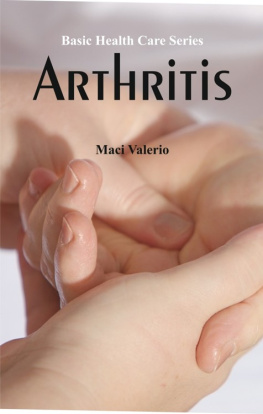Basic Health Care Series
Sexually Transmitted Diseases
Basic Health Care Series
Sexually Transmitted Diseases
Lester Bivens
Alpha Editions
Copyright 2017
ISBN : 9789386367570
Design and Setting By
Alpha Editions
email - alphaedis@gmail.com
All rights reserved. No part of this publication may be reproduced, distributed, or transmitted in any form or by means, including photocopying, recording, or other electronic or mechanical methods, without the prior written permission of the publisher.
The views and characters expressed in the book are of the author and his/her imagination and do not represent the views of the Publisher.
Contents
Preface
1. Sexually Transmitted Infection
2. STDs Caused by Bacteria
3. Types of STDs (STIs)
4. Safe Sex
5. Gonorrhea
6. Symptoms and Causes : Sexually Transmitted Diseases (STDs)
7. HIV Infection: Detection, Counseling, and Referral
8. Facts on Sexually Transmitted Diseases (STDs)
9. Sexually Transmitted Diseases Treatment
Preface
Sexually transmitted diseases (STDs) are infections that are passed from one person to another through sexual contact. The causes of STDs are bacteria, parasites, yeast, and viruses.
Sexually transmitted diseases (STDs) are infections that can be transmitted through sexual contact with an infected individual. These are also termed sexually transmitted infections or STIs. STDs can be transmitted during vaginal or other types of sexual intercourse including oral and anal sex.
Most STDs affect both men and women, but in many cases the health problems they cause can be more severe for women. If a pregnant woman has an STD, it can cause serious health problems for the baby. Antibiotics can treat STDs caused by bacteria, yeast, or parasites. There is no cure for STDs caused by a virus, but medicines can often help with the symptoms and keep the disease under control. Correct usage of latex condoms greatly reduces, but does not completely eliminate, the risk of catching or spreading STDs.
People who indulge in high-risk sexual behavior as well as those with STD symptoms need to be checked for the presence of STDs. If not treated, these infections may have long-term severe consequences and can also be passed onto partners of the infected individual. The primary approach to treatment, which varies according to the type of infection, is preventing further transmission of the infection and treating all the sexual partners involved.
This is an excellent book that offers practical information on the prevention, diagnosis and treatment of these infections, The sexually transmitted diseases source book offers more detail on individual disease, it is much more expensive and lacks this book's vital information about communication.
Editor
Sexually Transmitted Infection
Sexually transmitted infections (STI), also referred to as sexually transmitted diseases (STD) and venereal diseases (VD), are infections that are commonly spread by sex, especially vaginal intercourse, anal sex and oral sex. Most STIs initially do not cause symptoms. This results in a greater risk of passing the disease on to others. Symptoms and signs of disease may include vaginal discharge, penile discharge, ulcers on or around the genitals, and pelvic pain. STIs acquired before or during birth may result in poor outcomes for the baby. Some STIs may cause problems with the ability to get pregnant.
More than 30 different bacteria, viruses, and parasites can cause STIs. Bacterial STIs include chlamydia, gonorrhea, and syphilis among others. Viral STIs include genital herpes, HIV/AIDS, and genital warts among others. Parasitic STIs include trichomoniasis among others. While usually spread by sex, some STIs can also be spread by non-sexual contact with contaminated blood and tissues, breastfeeding, or during childbirth. STI diagnostic tests are easily available in the developed world, but this is often not the case in the developing world.
The most effective way of preventing STIs is by not having sex. Some vaccinations may also decrease the risk of certain infections including hepatitis B and some types of HPV. Safer sex practices such as use of condoms, having a smaller number of sexual partners, and being in a relationship where each person only has sex with the other also decreases the risk. Circumcision in males may be effective to prevent some infections. Most STIs are treatable or curable. Of the most common infections, syphilis, gonorrhea, chlamydia, trichomoniasis are curable, while herpes, hepatitis B, HIV/AIDS, and HPV are treatable but not curable. Resistance to certain antibiotics is developing among some organisms such as gonorrhea.
In 2008, it was estimated that 500 million people were infected with either syphilis, gonorrhea, chlamydia or trichomoniasis.At least an additional 530 million people have genital herpes and 290 million women have human papillomavirus. STIs other than HIV resulted in 142,000 deaths in 2013. In the United States there were 19 million new cases of sexually transmitted infections in 2010. Historical documentation of STIs date back to at least the Ebers papyrus around 1550 BC and the Old Testament. There is often shame and stigma associated with these infections. The term sexually transmitted infection is generally preferred over the terms sexually transmitted disease and venereal disease, as it includes those who do not have symptomatic disease.
Classification
Until the 1990s, STIs were commonly known as venereal diseases, the word venereal being derived from the Latin word venereus, and meaning relating to sexual intercourse or desire, ultimately derived from Venus, the Roman goddess of love. Social disease was a phrase used as a euphemism.
The World Health Organization (WHO) has recommended sexually transmitted infection as the preferred term since 1999. Sexually transmitted infection is a broader term than sexually transmitted disease. An infection is a colonization by a parasitic species, which may not cause any adverse effects. In a disease, the infection leads to impaired or abnormal function. In either case, the condition may not exhibit signs or symptoms. Increased understanding of infections like HPV, which infects a significant portion of sexually active individuals but cause disease in only a few, has led to increased use of the term STI. Public health officials originally introduced the term sexually transmitted infection, which clinicians are increasingly using alongside the term sexually transmitted disease in order to distinguish it from the former.
STD may refer only to infections that are causing diseases, or it may be used more loosely as a synonym for STI. Most of the time, people do not know that they are infected with an STI until they are tested or start showing symptoms of disease. Moreover, the term sexually transmissible disease is sometimes used since it is less restrictive in consideration of other factors or means of transmission. For instance, meningitis is transmissible by means of sexual contact but is not labeled an STI because sexual contact is not the primary vector for the pathogens that cause meningitis. This discrepancy is addressed by the probability of infection by means other than sexual contact. In general, an STI is an infection that has a negligible probability of transmission by means other than sexual contact, but has a realistic means of transmission by sexual contact (more sophisticated meansblood transfusion, sharing of hypodermic needlesare not taken into account). Thus, one may presume that, if a person is infected with an STI, e.g., chlamydia, gonorrhea, genital herpes, HPV it was transmitted to him/her by means of sexual contact.







